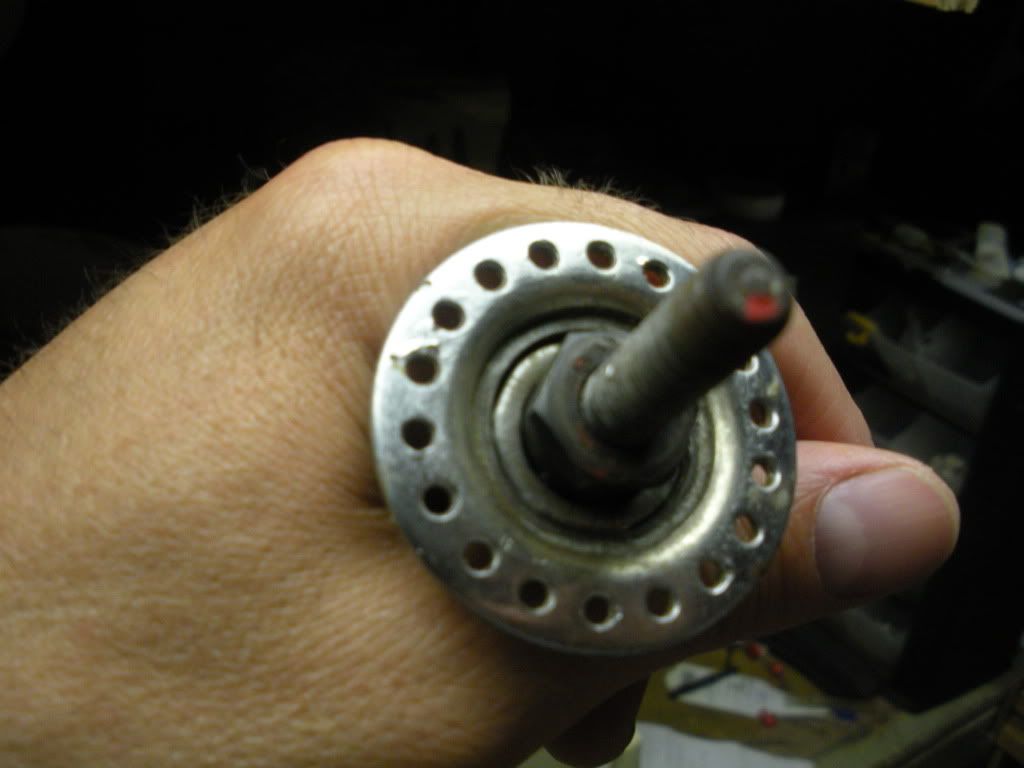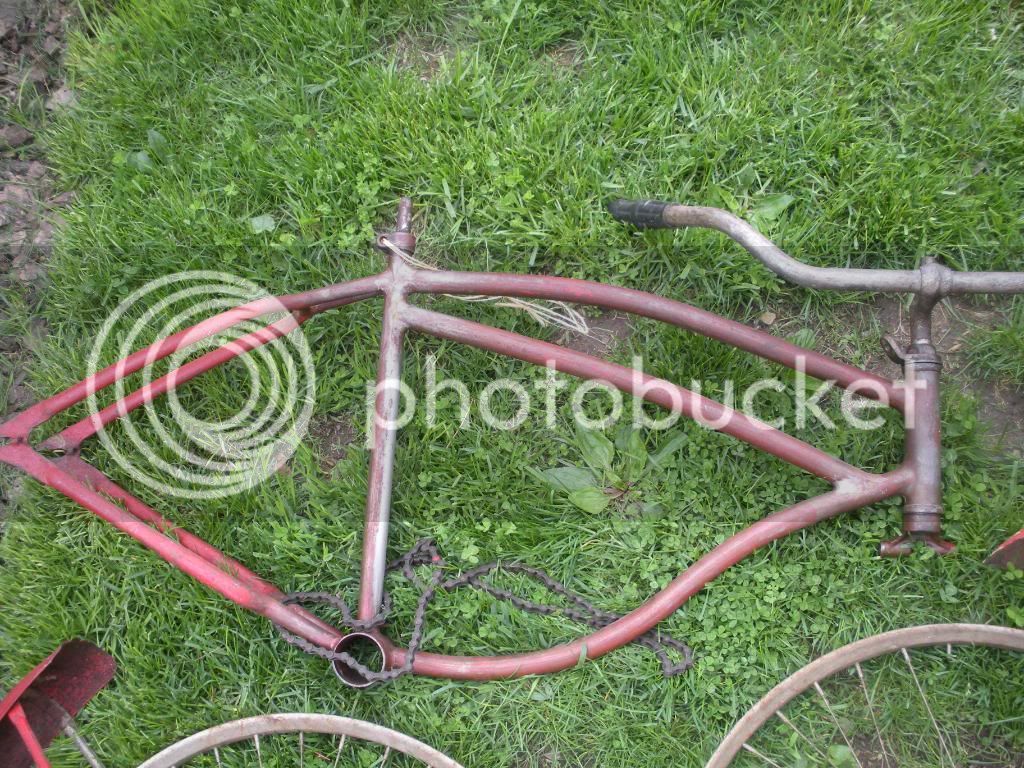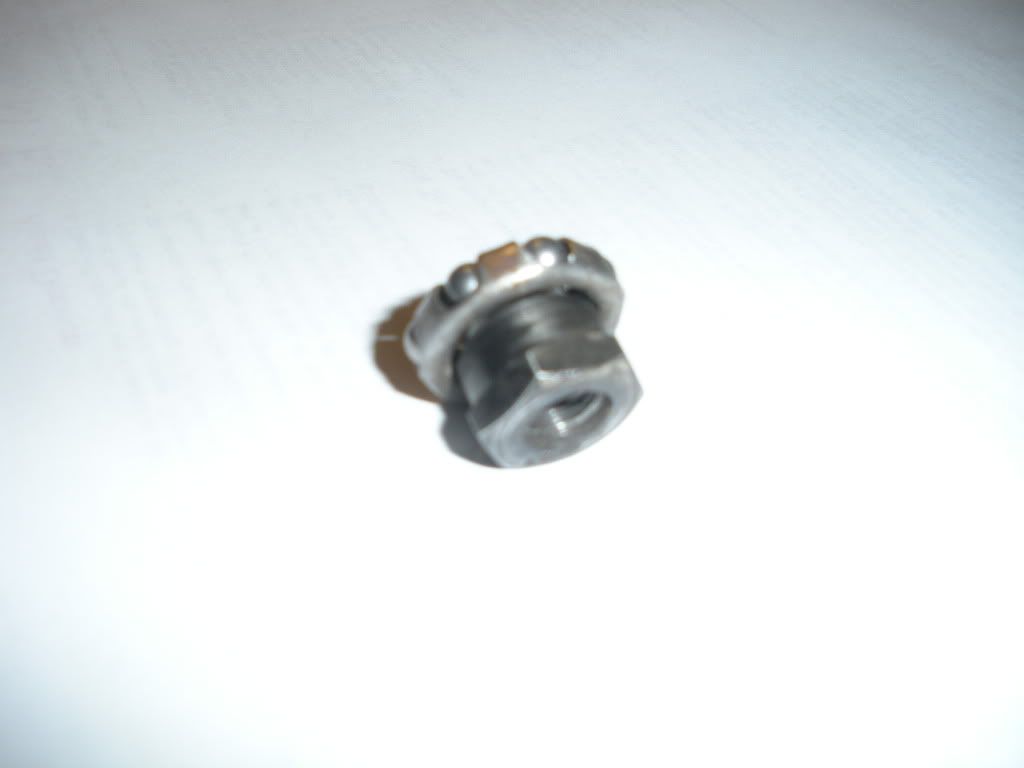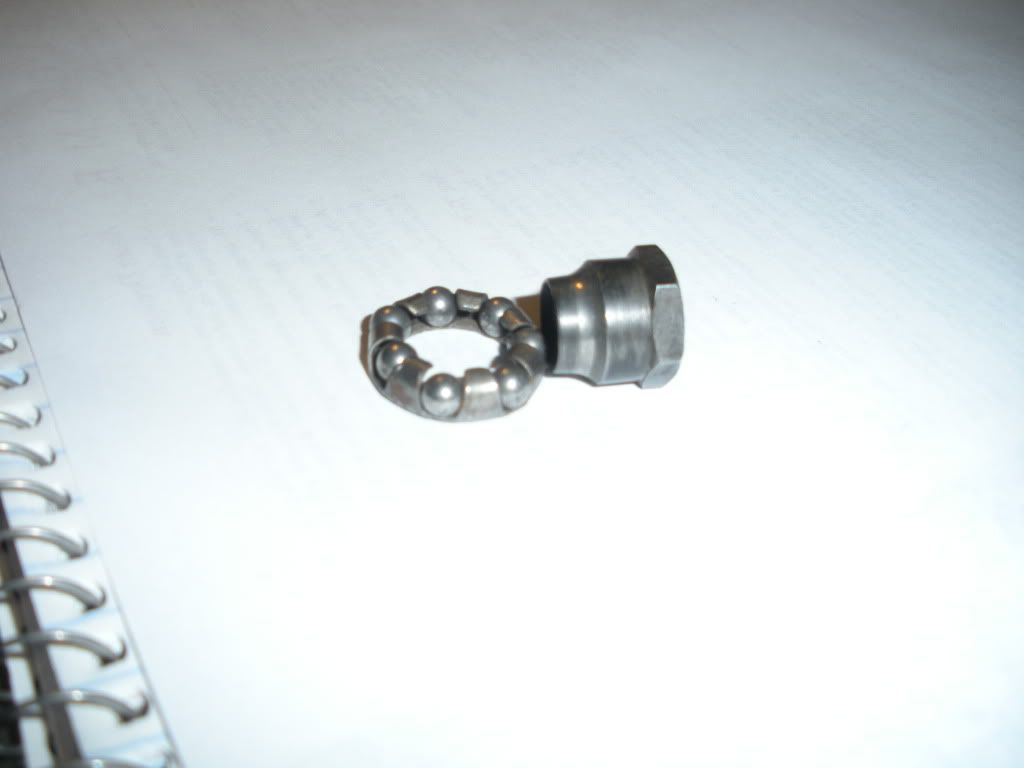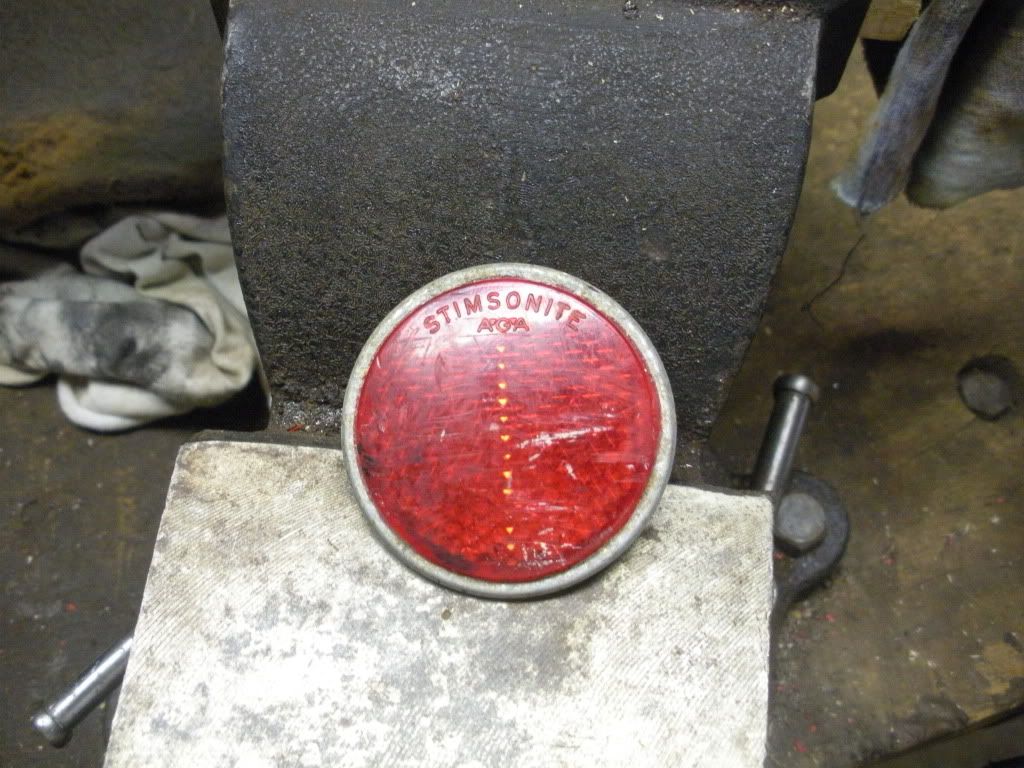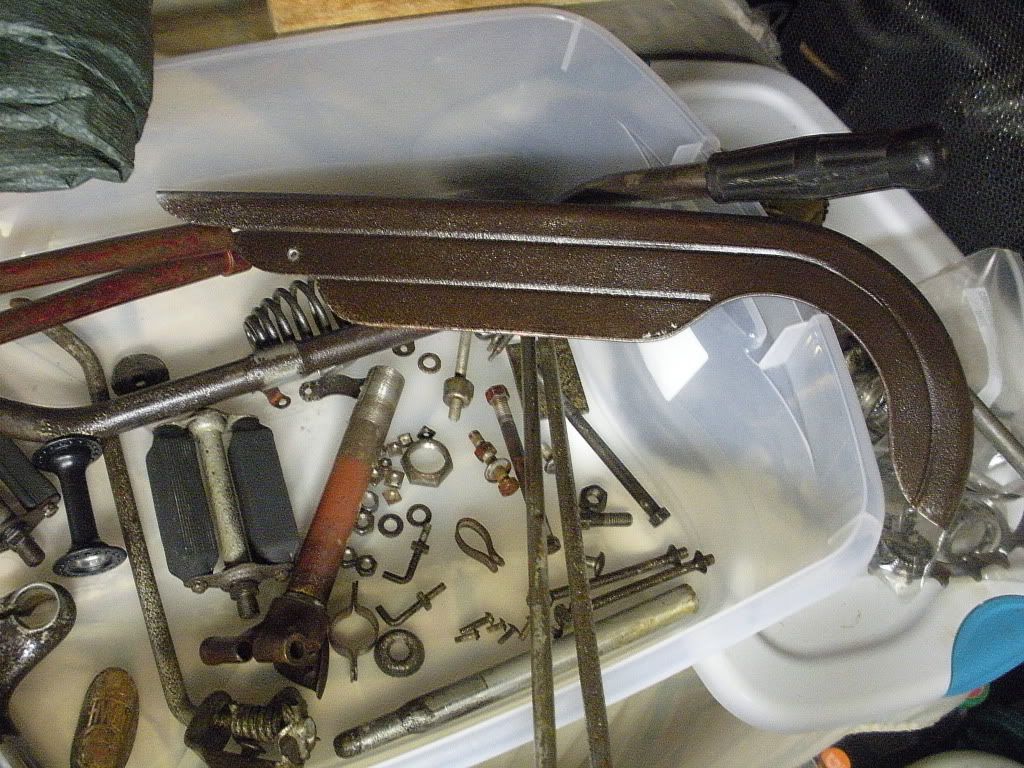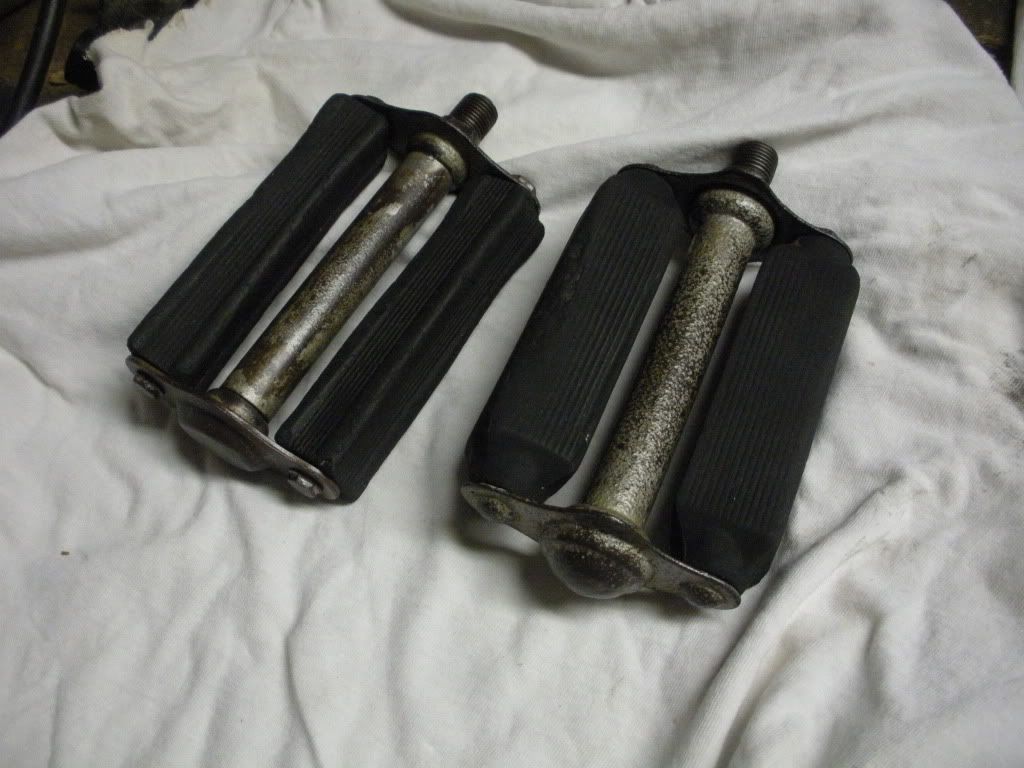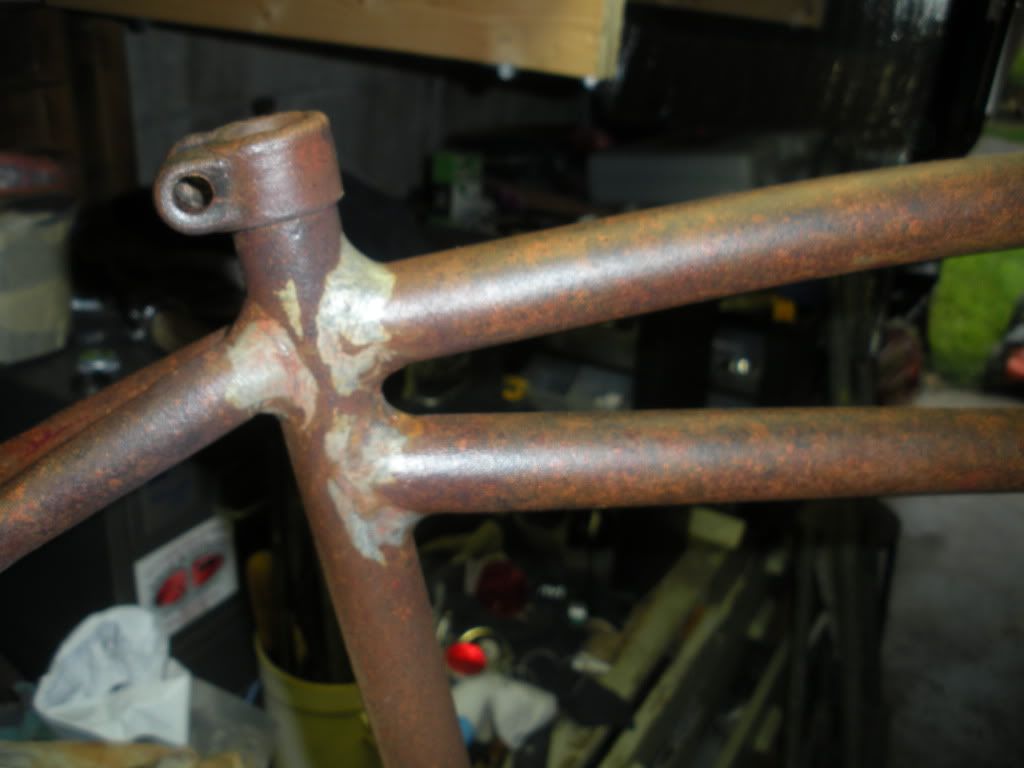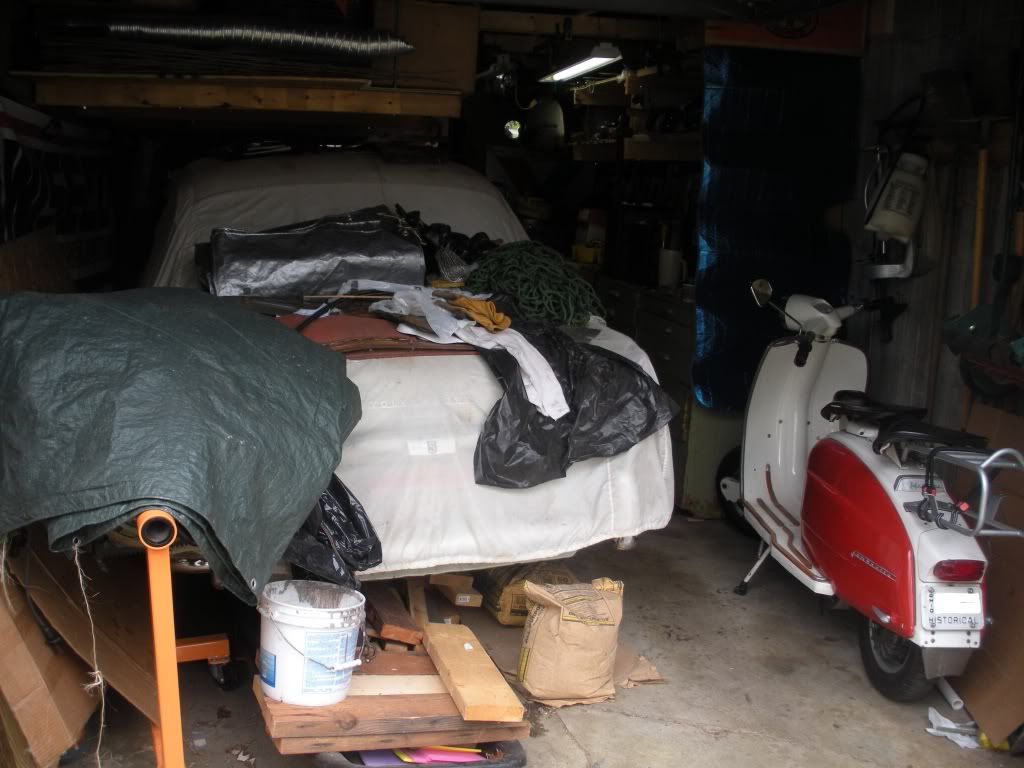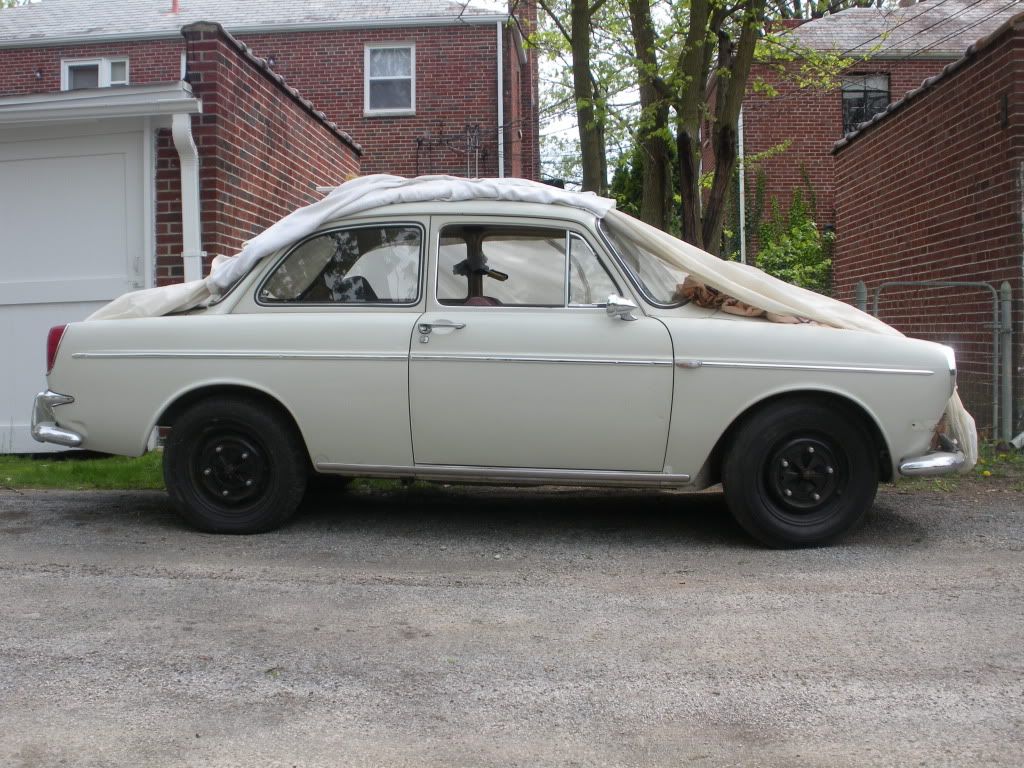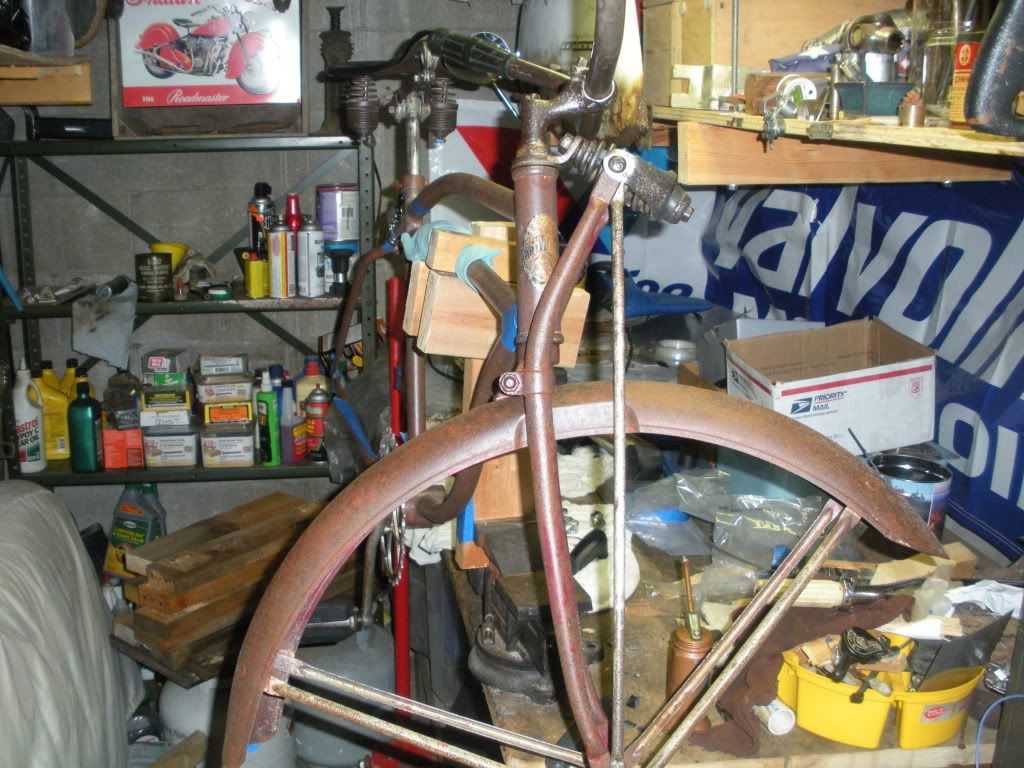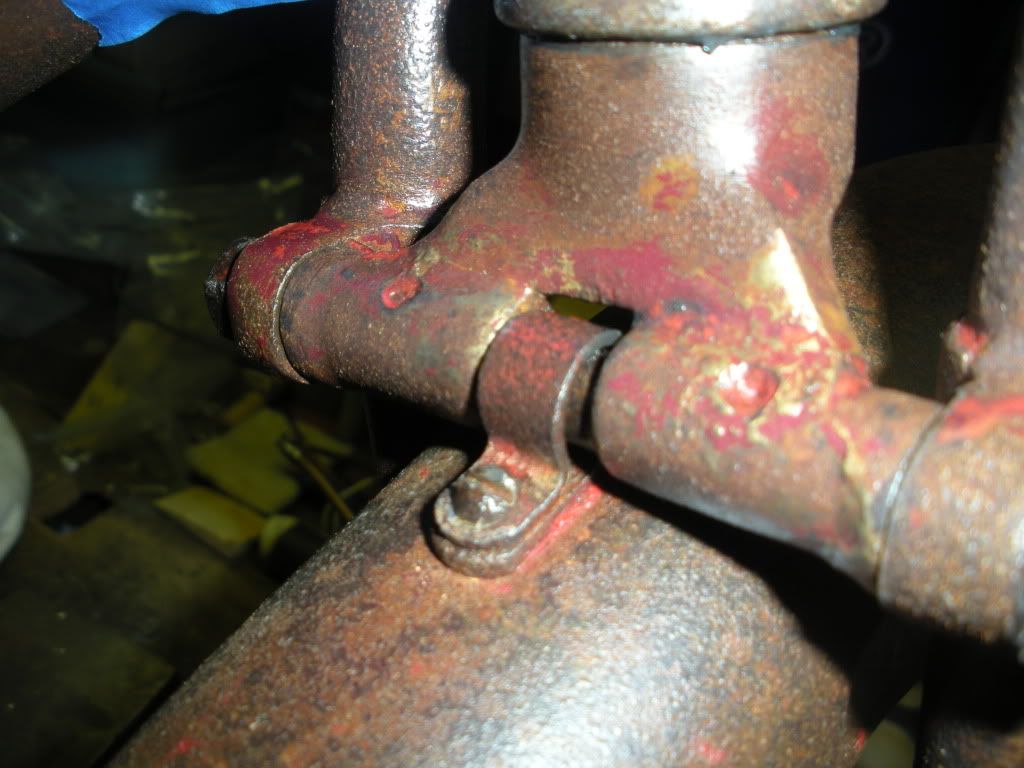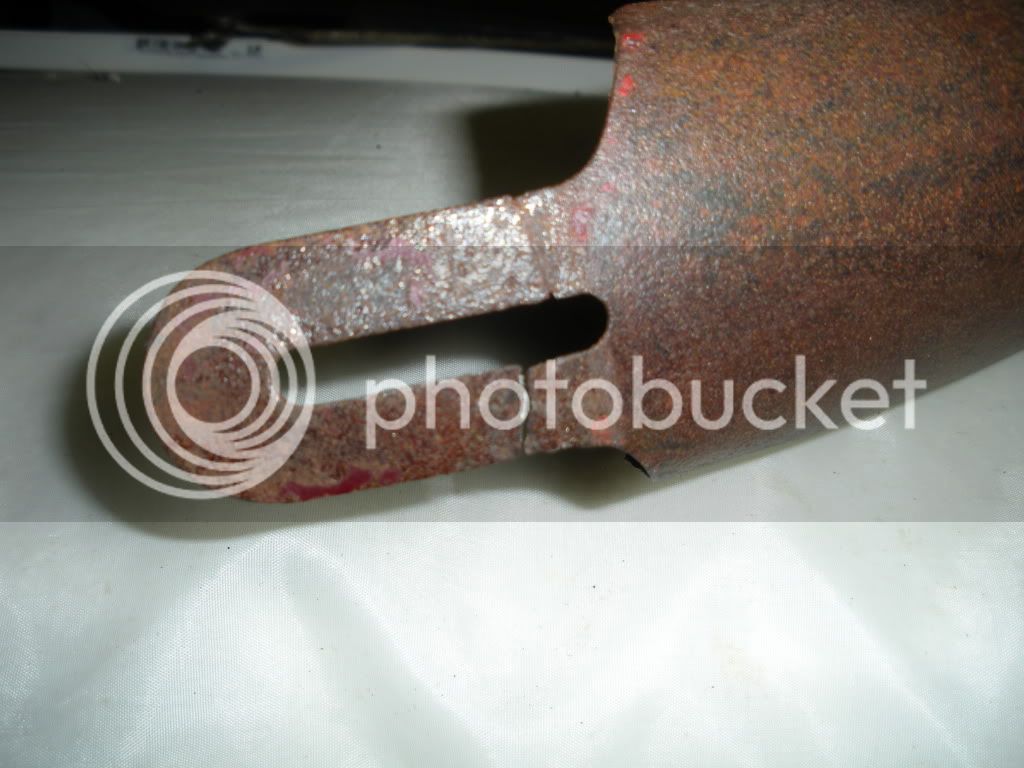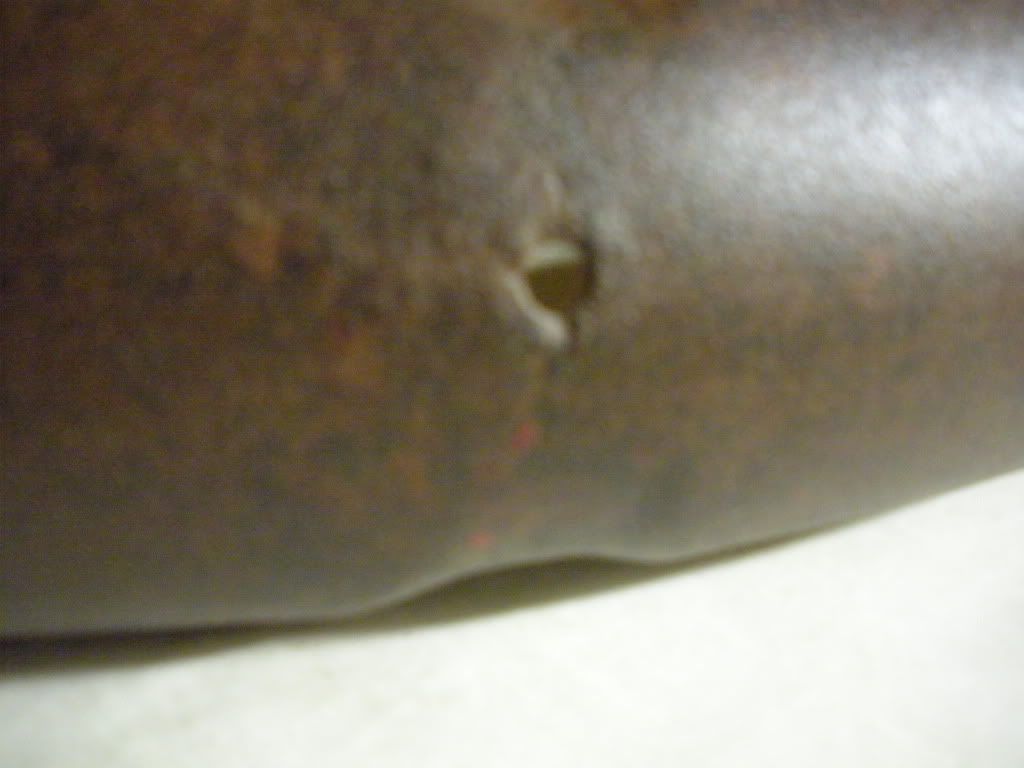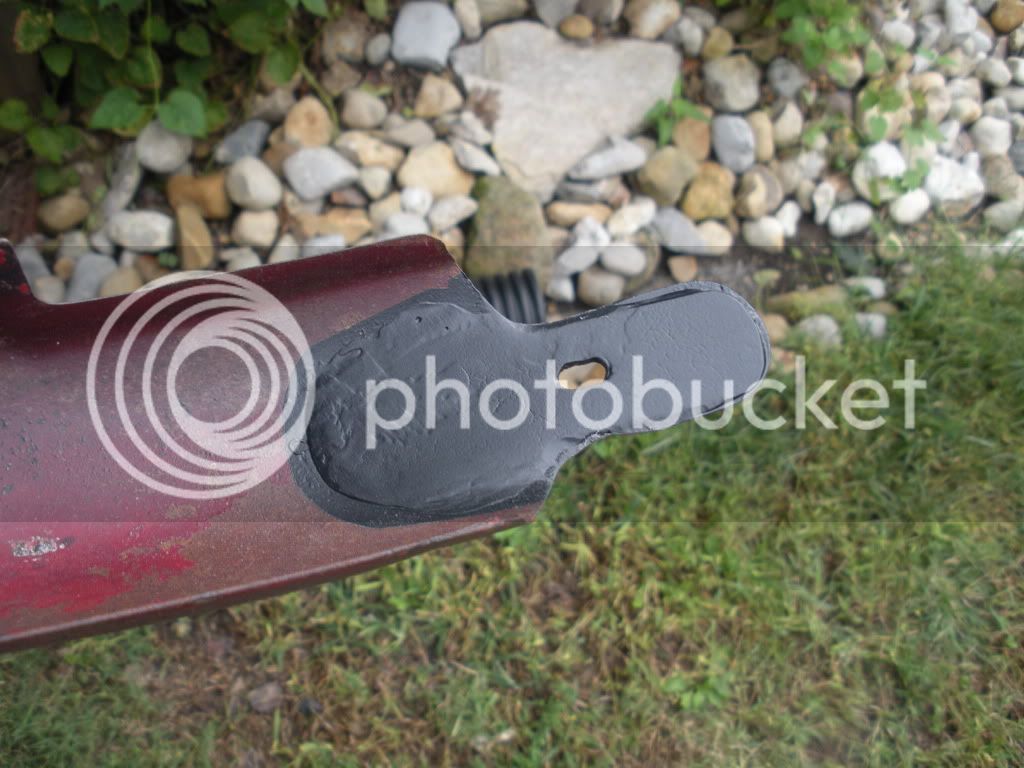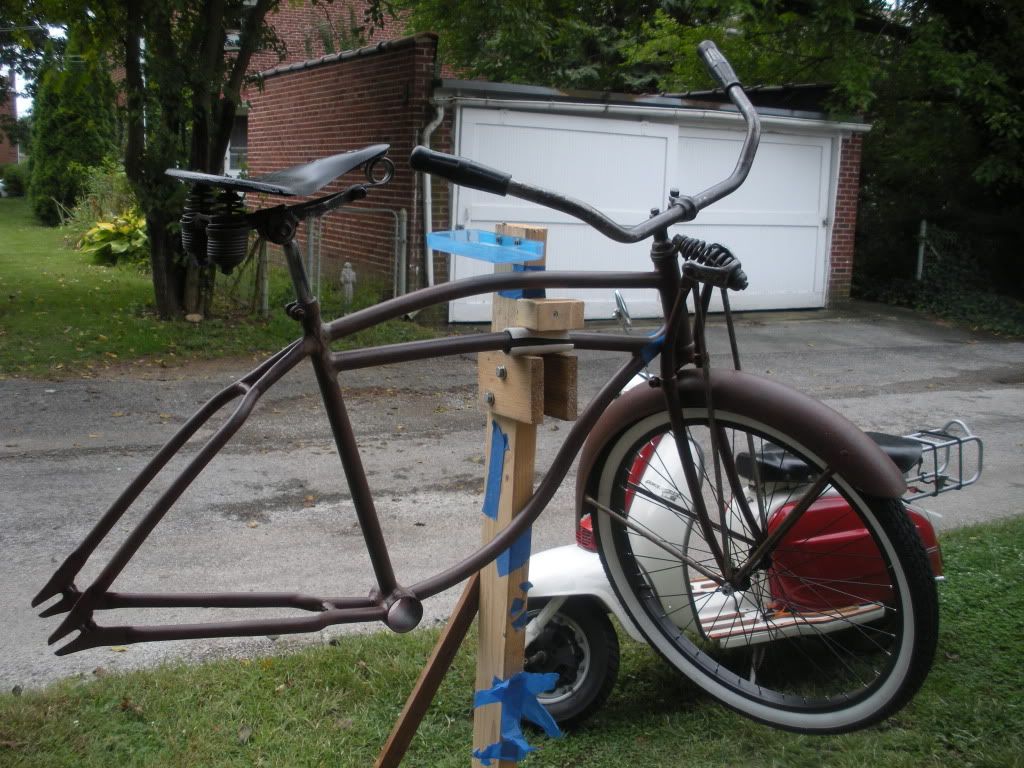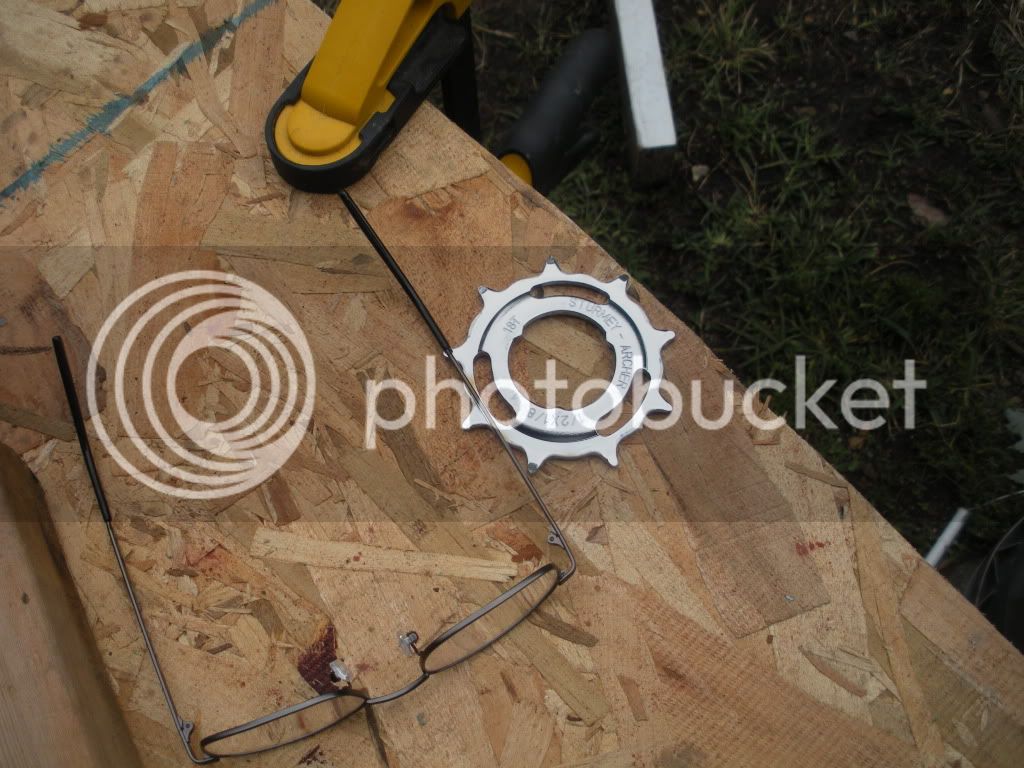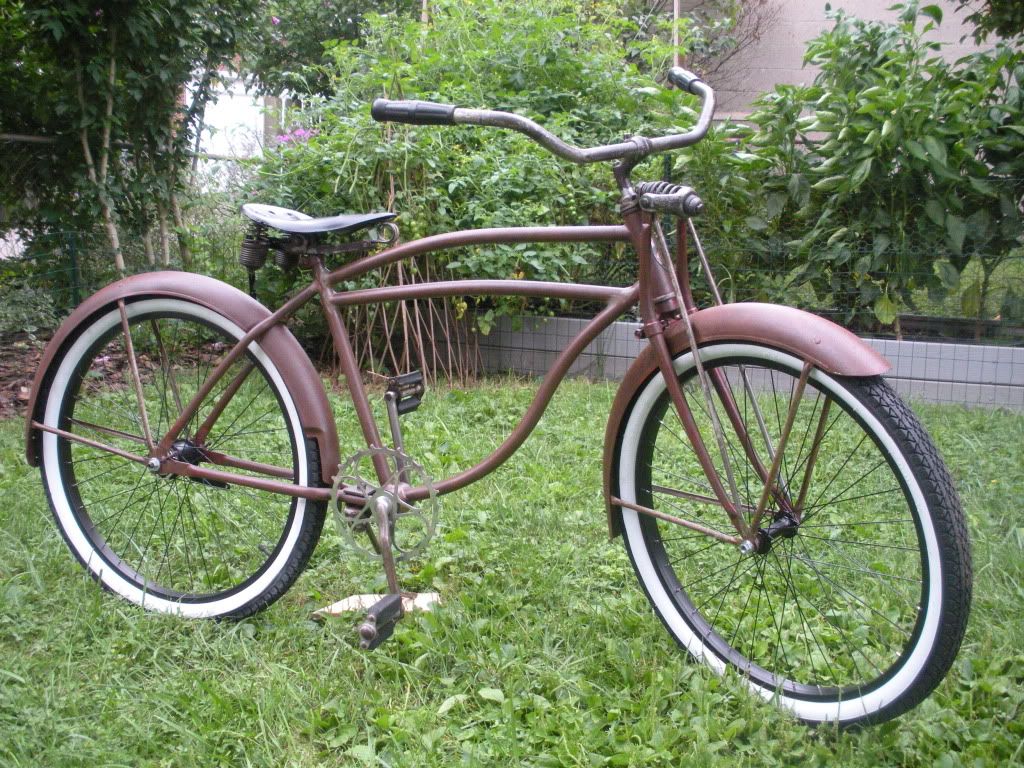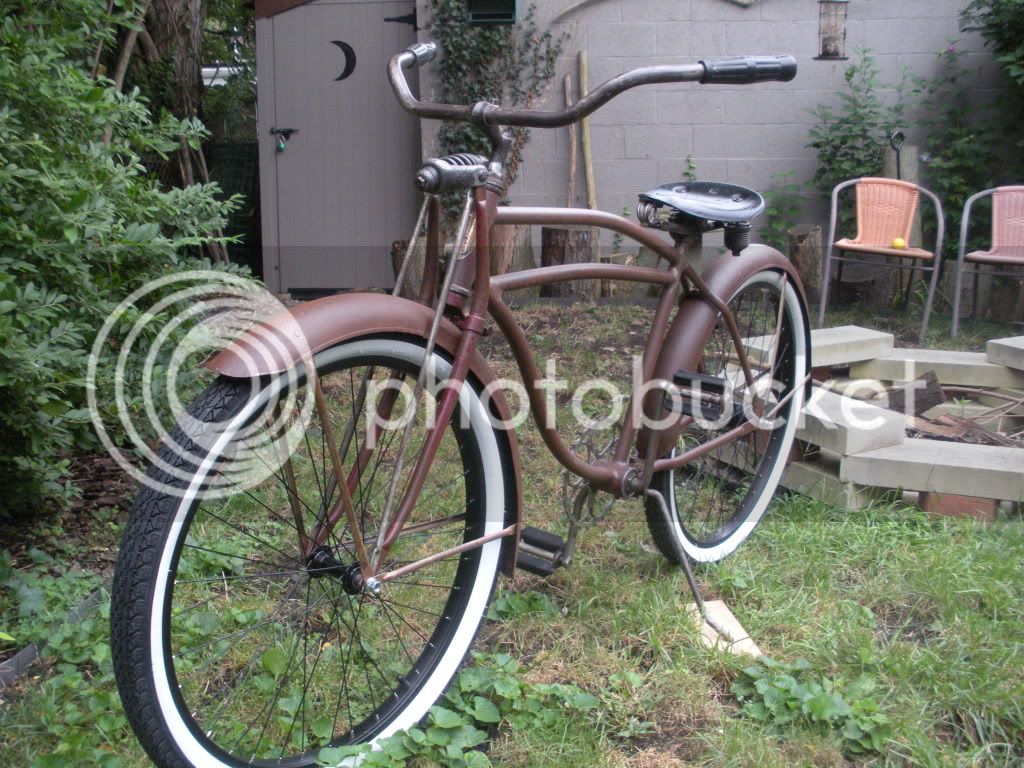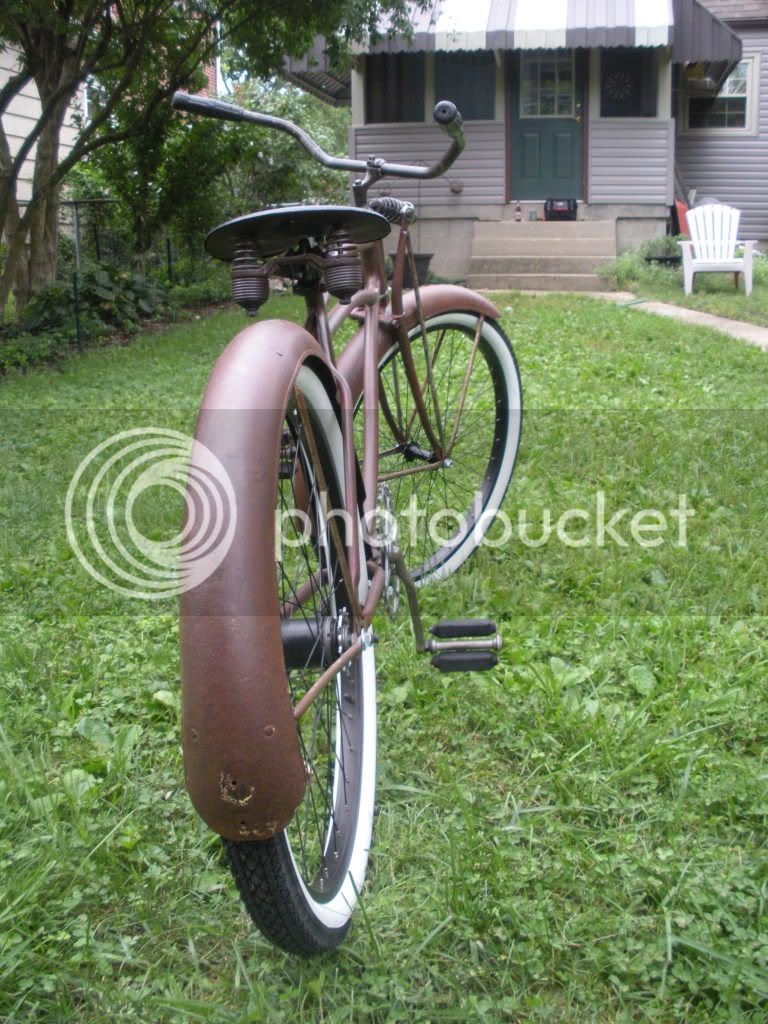I've been fortunate to acquire my grandfather's old Schwinn springer bike. I used to ride this bike when visiting my grandparents as a kid. This is my first attempt at working on a vintage bike and I'm sure I'll have lots of questions as I go along. The bike is mostly complete and original and I would like to give it a mini restore: mechanical refresh, basic paint, possibly an upgrade to a 3 speed hub to make it a little more rideable around town.
I do have a couple of quick questions:
- I'm trying to identify the year/model. This bike has serial number G74326 under the pedal crank housing. In looking at some of the Schwinn serial number sites on the web I see serial numbers G071209 - G076119 were produced March 1950. Is the length of the serial number significant? Mine has a letter followed by 5 numbers, the list I looked at had a letter followed by 6 numbers. Is my bike a 1950?
- I have been unable to remove the seat post, rusted in place. I've tried repeated soaking with PB Blaster for several days followed by heat application, no luck. Do I need more heat (did not get it glowing red)? Any suggestions?
- I have been unable to remove the goose neck/handlebars from the frame. I did notice a small nub of sorts on the inside at the bottom is there some trick with that?
- I have been unable to remove the master link on the chain. This is a skip tooth chain. Special tools needed or just a special procedure?
Link to pictures: http://s1230.photobucket.com/albums/ee4 ... m/Schwinn/
I do have a couple of quick questions:
- I'm trying to identify the year/model. This bike has serial number G74326 under the pedal crank housing. In looking at some of the Schwinn serial number sites on the web I see serial numbers G071209 - G076119 were produced March 1950. Is the length of the serial number significant? Mine has a letter followed by 5 numbers, the list I looked at had a letter followed by 6 numbers. Is my bike a 1950?
- I have been unable to remove the seat post, rusted in place. I've tried repeated soaking with PB Blaster for several days followed by heat application, no luck. Do I need more heat (did not get it glowing red)? Any suggestions?
- I have been unable to remove the goose neck/handlebars from the frame. I did notice a small nub of sorts on the inside at the bottom is there some trick with that?
- I have been unable to remove the master link on the chain. This is a skip tooth chain. Special tools needed or just a special procedure?
Link to pictures: http://s1230.photobucket.com/albums/ee4 ... m/Schwinn/






